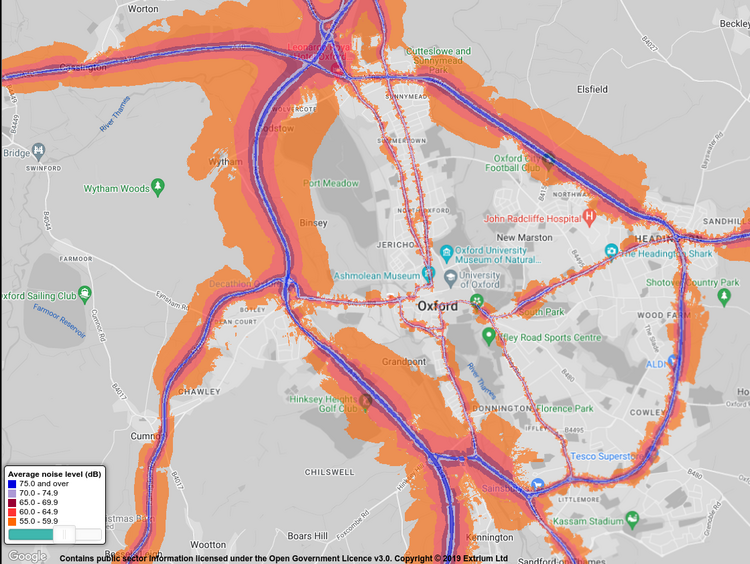Motor traffic noise pollution is really two separate problems. The first is local spikes in noise from individual vehicles, sometimes deliberately driven - and even modified - to make noise. The second is high levels of ambient noise from motor traffic generally.
Deliberate noise creation is basically a form of vandalism, but is transient and so given less attention than (say) flytipping, even though its effects may be worse, given the consequences of disturbed sleep, loss of concentration and so forth. Mopeds and motorcycles are a particular problem, being louder than cars, but the worst offenders are vehicles modified or driven to deliberately create noise. Unwarranted use of horns also falls into this category. A single revved-up motorcycle going down Broad St can disturb hundreds of people and interrupt scores of conversations ("a jacked-up motorcycle in the middle of the night can easily wake up 10,000 Parisians").

High levels of ambient noise can be significant over large areas — the noise from Oxford's ring road reaches for kilometres — and though the impacts are less obvious (people are less likely to be woken up) the health effects are significant. Noise levels depend on traffic speed and volume and on distance, with intervening physical barriers (in most cases other housing) providing effective buffering.
This video is a good introduction to noise pollution.
Traffic removal/reduction will obviously help, and reduced noise pollution will be one positive effect from the Central Oxfordshire Travel Plan and its broader measures to reduce motor traffic. There may be some gains from shifting traffic away from narrower streets to wider main roads with larger setbacks to homes.
The other obvious approach is to reduce tyre and aerodynamic noise through speed reduction, dropping Oxford's main roads to 20mph and its ring road to 40mph. The 20mph changes will help with noise as well as road danger (in Lausanne, noise reduction was a significant part of the health gains from 30kmh/20mph speeds) and 40mph on the ring-road would have a dramatic effect, especially if enforced by average speed cameras. Using sound barriers may be appropriate in some places (as along the A34 past Botley) and "quiet asphalt" could be an option on roads with noise concerns and no other possible ameliorations (the B480/Oxford Rd?). Where necessary, sound-proofing individual buildings should be integrated into schemes to improve insulation and heating.
Addressing noise spikes from individual vehicles is harder. The county has already consulted on eight cameras to stop mopeds transiting pedestrian areas of the city centre, and now has the powers to put those in, but there is no information on if or when those will be implemented. My hope is that, as well as reducing noise pollution in the inner city, this will induce a lot of delivery drivers to shift from mopeds to e-bikes, reducing noise across the city (even if some of the e-bikes are illegally powered and actually unregistered electric mopeds). ANPR cameras could also be used to enforce restrictions elsewhere (for example, augmenting the bollards on Divinity and Southfield Rds) to help drive that shift. I don't think noise cameras would help much, as they would only protect short stretches of individual streets and roads, but more regular police enforcement would.
